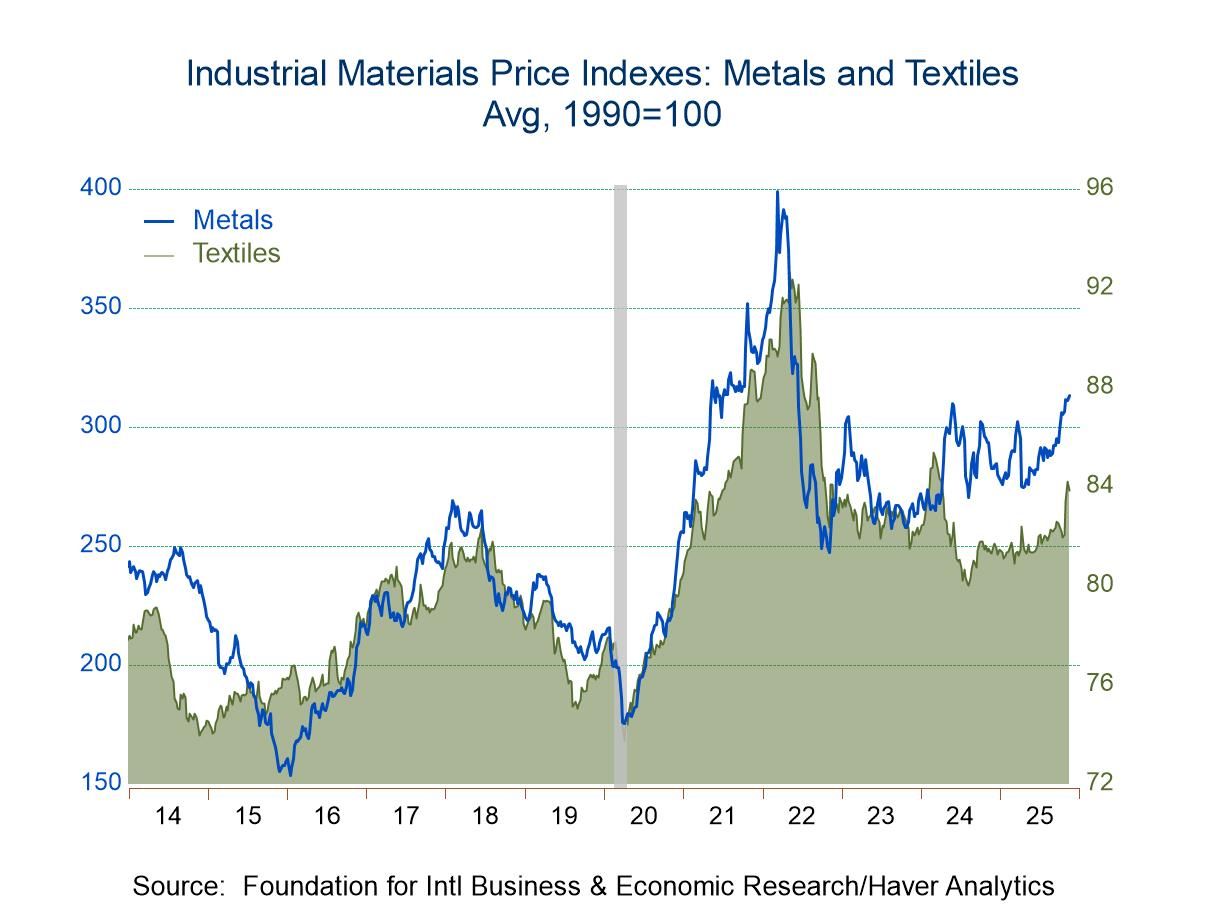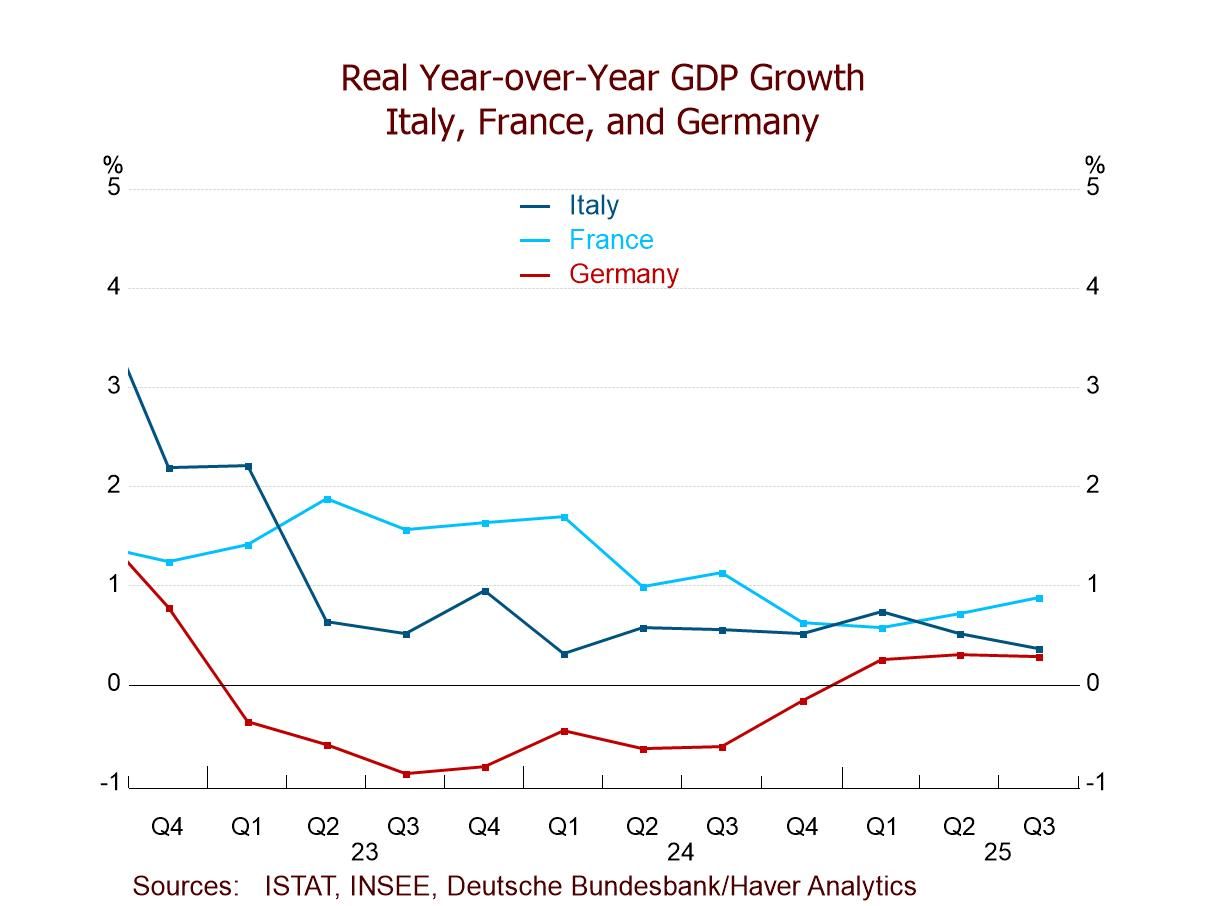U.S. Industrial Production Slows in May after Sizable April Gain
Summary
- Overall industrial production down 0.2%.
- Manufacturing output increases slightly after April’s big gain.
- Total capacity utilization edges down, but holds steady in manufacturing.


Industrial production decreased 0.2% (+0.2% y/y) in May after advancing 0.5% in April, increasing 0.1% in March and being unchanged in February. The April performance was unrevised, while March was raised to 0.1% from 0.0% reported before and February’s move was unrevised, according to the Federal Reserve Board. May’s decrease was weaker than market expectations, which looked for a 0.1% increase according to the Action Economics Forecast Survey.
By industry groups, the overall decline in industrial production was generated by decreases in mining output, down 0.4% in May (+5.0% y/y), and in utilities production, down 1.8% (-3.8% y/y). Manufacturing production managed to edge higher by 0.1% (-0.3% y/y), even after April’s 0.9% surge.
Within manufacturing, durable goods production rose 0.3% (+0.4% y/y) in May after advancing 1.6% in April. Durable goods sectors with gains in May include aerospace and miscellaneous transportation equipment, up 2.5% (+1.5% y/y)), electrical equipment, appliances and components, up 1.4% (+1.6% y/y), fabricated metal products, up 0.7% (-0.1% y/y) and miscellaneous durable good, up 0.9% (+0.3% y/y)). Motor vehicles and parts production increased 0.2% (+10.0% y/y) in May after April’s sizable 9.8% month-to-month advance. Other durable goods industries had declines in May, especially computers and electronic products, -0.8% (-1.5% y/y), primary metals, -0.6% (-2.7% y/y), and furniture and related products, -0.5% (-9.0% y/y).
Nondurable goods production edged down 0.1% (-0.9% y/y) in May after increasing 0.4% in April. The May total was lifted by a 1.7% surge (+1.6% y/y) in petroleum and coal products and a 0.1% increase (-8.9% y/y) in paper. Other industries had production declines in May, including -1.6% in apparel and leather goods (+4.3% y/y), -0.9% in textiles (-9.0% y/y), -0.9% in printing and related support activities (-3.8% y/y), -0.4% in food, beverages and tobacco (-0.5% y/y), and -0.2% decreases in chemicals (+1.1% y/y) and in plastic and rubber products (-4.6% y/y).
By market groups, consumer goods output was down 0.1% in May (+0.2% y/y) after a 1.0% increase April. Durable consumer goods production rose 0.3% in May (+0.6%% y/y), supported by an 0.8% rise in miscellaneous durables (-0.9% y/y) and 0.5% in appliances, furniture and carpeting (-7.3% y/y). Nondurable goods production fell 0.4% and was unchanged y/y. Business equipment output decreased by 0.1% in May (+0.3% y/y). Production of construction supplies rose 0.6% (-2.2% y/y) while materials production decreased 0.3% (+0.9% y/y).
In special classifications, factory output of selected high-tech industries fell 0.6% in May (+2.1% y/y), but that followed a 1.9% advance in April. Manufacturing production excluding selected high-tech industries rose just 0.1% in May (-0.4% y/y) after a 0.9% advance in April. Manufacturing production excluding both selected high-tech and motor vehicles & parts also rose just 0.1% in May (-1.2% y/y).
Capacity utilization was 79.6% in May, down modestly from 79.8% in April. A 79.7% rate had been expected in the Action Economics survey. Manufacturing capacity utilization was 78.4% in May, the same as in April, which was revised up from 78.3%.
Industrial production and capacity are located in Haver's USECON database. Additional detail on production and capacity utilization can be found in the IP database. The expectations figures come from the AS1REPNA database.


Carol Stone, CBE
AuthorMore in Author Profile »Carol Stone, CBE came to Haver Analytics in 2003 following more than 35 years as a financial market economist at major Wall Street financial institutions, most especially Merrill Lynch and Nomura Securities. She had broad experience in analysis and forecasting of flow-of-funds accounts, the federal budget and Federal Reserve operations. At Nomura Securities, among other duties, she developed various indicator forecasting tools and edited a daily global publication produced in London and New York for readers in Tokyo. At Haver Analytics, Carol was a member of the Research Department, aiding database managers with research and documentation efforts, as well as posting commentary on select economic reports. In addition, she conducted Ways-of-the-World, a blog on economic issues for an Episcopal-Church-affiliated website, The Geranium Farm. During her career, Carol served as an officer of the Money Marketeers and the Downtown Economists Club. She had a PhD from NYU's Stern School of Business. She lived in Brooklyn, New York, and had a weekend home on Long Island.





 Global
Global